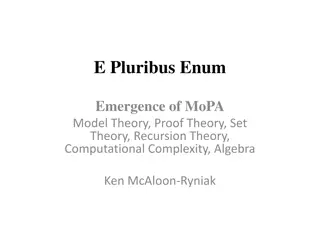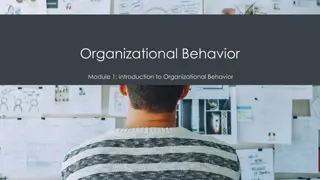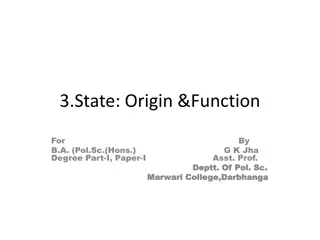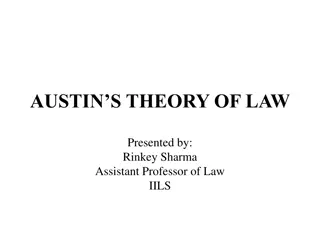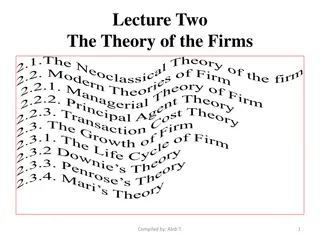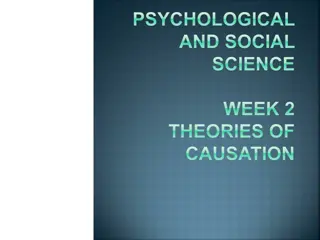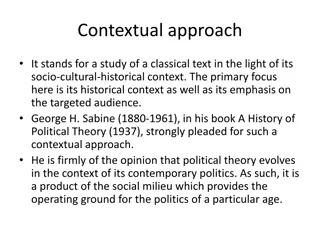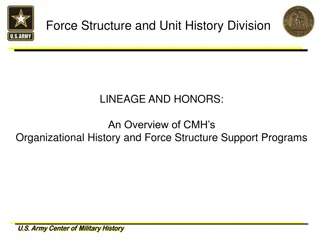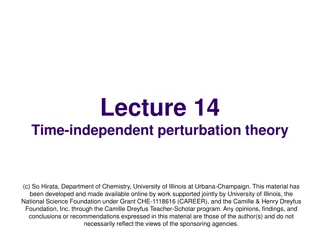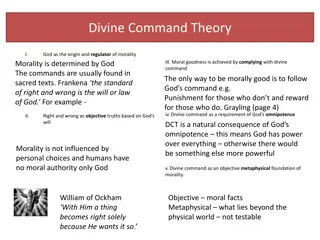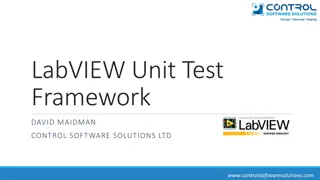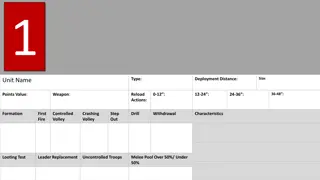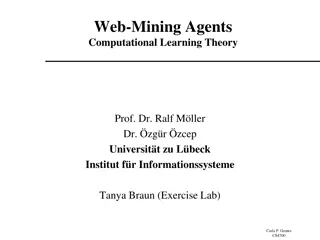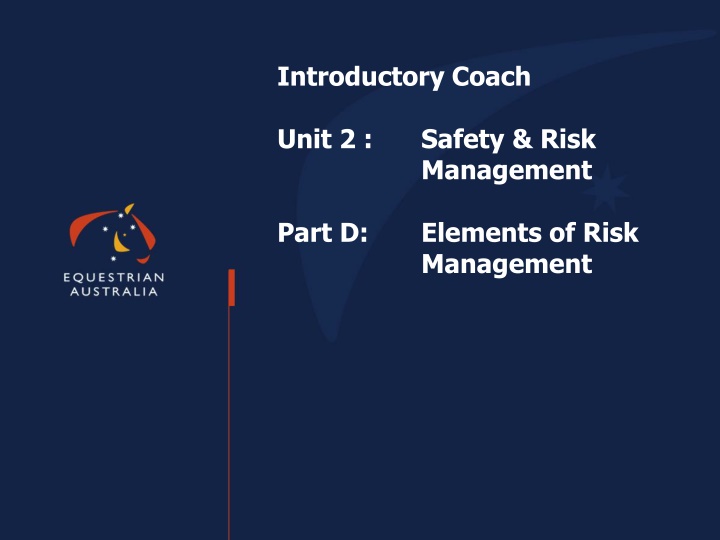
Effective Risk Management in Equestrian Activities
Learn about hazards, risks, and the importance of risk management in equestrian activities to ensure safety and minimize the likelihood of injuries. Understand the Duty of Care, legal liability, and how to proactively manage risks for a safer coaching environment.
Download Presentation

Please find below an Image/Link to download the presentation.
The content on the website is provided AS IS for your information and personal use only. It may not be sold, licensed, or shared on other websites without obtaining consent from the author. If you encounter any issues during the download, it is possible that the publisher has removed the file from their server.
You are allowed to download the files provided on this website for personal or commercial use, subject to the condition that they are used lawfully. All files are the property of their respective owners.
The content on the website is provided AS IS for your information and personal use only. It may not be sold, licensed, or shared on other websites without obtaining consent from the author.
E N D
Presentation Transcript
Introductory Coach Unit 2 : Safety & Risk Management Part D: Elements of Risk Management
Hazards & Risks A Hazard is anything that can cause harm, injury, damage, loss, incapacity or death Risk is the likelihood of such things occurring Name some potential hazards in your activities EQUESTRIAN AUSTRALIA
What is risk? Risks can be defined as: 1. a situation involving exposure to danger. 2. the possibility that something unpleasant will happen. 3. a person or thing causing a risk or regarded in relation to risk: a fire risk. All forms of equestrian participation involve some level of risk that an injury of damage to property may occur. Working with animals that are unpredictable and physically bigger and stronger than the people who work with them, creates a situation in which the potential for risk of injury or accident may be high. EQUESTRIAN AUSTRALIA
What is Risk Management? Risk Management is about identifying risks associated with your activities that may result in an injury to a person or damage to their property. It is the process you put in place to either remove the risk or minimise it to an acceptable level Being proactive to avoid the risk arising in the first place is the best way of limiting legal liability. EQUESTRIAN AUSTRALIA
Why Risk Management? Most importantly to limit occurrence and impact of serious injuries, including the emotional/social effects Risk Management Programs are also important in assisting Coaches in upholding their Duty of Care and reducing the likelihood of being accused of/or found negligent EQUESTRIAN AUSTRALIA
Duty of Care Under legislation (set by the Government) and legal precedents (set by the Courts) Coaches have a duty to ensure activities are provided free of risk and as safe as possible this is called a Duty of Care EQUESTRIAN AUSTRALIA
Legal Liability Breaching Duty of Care may lead to accusations of negligence . Negligence can be defined as unintentional harm (bodily injury or property damage) resulting from failure to meet a reasonable standard of care. Should the court make a judgment that defendant has been negligent then they are considered legally liable EQUESTRIAN AUSTRALIA
Legal Liability A definition of Liability is the state of being liable Liable = responsible by law; legally answerable (liable to) subject by law to (liable to do) likely to do (liable to) likely to experience (something undesirable) More details are included in Legal Issues for Coaches EQUESTRIAN AUSTRALIA
Benefits of Risk Management Program Risk Management Program aims to: prevent the Coach from ever being a position of being negligent Makes the risk more attractive to insurers Less claims means a lower insurance premiums Improve the reputation of the sport Reduce the occurrence and seriousness of incidents EQUESTRIAN AUSTRALIA
Common Sense Risk Management can sound complicated and arduous It is not astro-physics ..it is based on common sense Most Coaches exercise Risk Management in their daily activities (maybe without knowing it or calling it that!!!) EQUESTRIAN AUSTRALIA
Key Components of Risk Management 1. Identification 2. Measurement 3. Management EQUESTRIAN AUSTRALIA
Risk Identification First step to managing risk is identifying exposure. Risks can come in the form of: Physical hazards Management systems/training EQUESTRIAN AUSTRALIA
Physical Hazards Physical Hazards are the most obvious cause of risks In most cases hazards can be controlled by having an effective inspections program This includes: Inspections prior and during lessons Gear check, rider/horse match Inspect all areas arena, spectators, car parks Most experienced Coaches are well practiced at this and it is a daily matter of course EQUESTRIAN AUSTRALIA
Management Systems & Training While it is common to view risk management as dealing with physical hazards, there are risks that involve how you manage activities your administration record keeping procedures and systems. This can be where some Coaches are found lacking!?!?! Coaching is an outdoor activity not conducive to paperwork however it can be just as important as making sure the gate is shut EQUESTRIAN AUSTRALIA
Management Systems & Training Some examples of management systems are: Adhering to Coach s Code of Conduct Having Working with Children Check Ensuring correct use of protective equipment/clothing Having appropriate signage Designated carpark/spectator areas Use of waivers and disclaimers Making sure new students and their family understand the rules/behaviour required when on your property EQUESTRIAN AUSTRALIA
Good Management Systems These include: abiding by sport rules & regulations Rules by their very nature have inherent risk management and control elements eg safe dress and helmets, safe riding areas Equestrian Sport Discipline rules can provide a good basis for risk management policies Rules available from www.equestrian.org.au or www.horsesport.org. EQUESTRIAN AUSTRALIA
Good Management Systems Can also include: Adhering to relevant state and national legislation such as Child Protection, Fire Regulations, Storage of waste/dangerous chemicals. Abiding by the AHIC Code of Conduct and Standards Abiding by the standards set by the ASC EQUESTRIAN AUSTRALIA
Risk Measurement Having identified risks the next step is to measure the possible outcomes Measurement will dictate the action and timing of the actions you will need to take EQUESTRIAN AUSTRALIA
Risk Measurement The next step is how you deal with information gathered in assessment process. See the following Risk Management Chart and simple risk assessment form Activity: Create a list of the potential risks in your environment/venue/workplace Use this list in the following Risk Measurement activity EQUESTRIAN AUSTRALIA
Risk Priority Chart Consequences: how severely could it hurt someone? Extreme Death, permanent disablement Major Moderate Casualty Treatment Minor Likelihood How likely is it that it will occur? Serious bodily injury First Aid Only Very Likely Could happen frequently Likely Could happen occasionally Unlikely Could happen but rare Very Unlikely Could happen but probably never will 1 2 3 4 2 3 4 5 3 4 5 6 4 5 6 7 EQUESTRIAN AUSTRALIA
Risk Priority Chart This table is to rank risks only. Scores provide priority of how important/urgent action needs to be taken ie. 1-3: Do something immediately 4-5: So something asap 6-7: Risks not needing immediate attention How do your identified risks measure up? EQUESTRIAN AUSTRALIA
Simple Risk Assessment Identify Risk Issue(s)? What would happen if, is it possible that, could ? Think what could cause the issue to occur Identify Cause(s)? What Consequences? What is the Likelihood? Impact? Refer to Risk priority chart Rank of Risk? Are there existing controls? Are they adequate? Controls adequate? What could prevent/reduce impact Recommended Actions Practical steps to prevent cause/lessen impact Use Risk Priority Chart to prioritise timing for actions in response to risk Action Priority/Timing? EQUESTRIAN AUSTRALIA
Risk Management Action Plan Now that this information has been collected and considered - it is imperative you put into place an action plan to ensure that hazards are remedied or schedule for remedy. EQUESTRIAN AUSTRALIA
Key Risk Management Strategies The five key strategies to consider for your Risk Action Plan are: 1. Risk Avoidance 2. Risk Reduction 3. Risk Acceptance 4. Risk Transfer 5. Insurance EQUESTRIAN AUSTRALIA
Risk Avoidance Simply, can the risk be totally avoided. Can the activity be changed in such a way to completely remove any risk of injury or property damage? In the case of equestrian sports the answer is generally no . Horses are unpredictable, flight animals and accidents can and do occur EQUESTRIAN AUSTRALIA
Risk Reduction If risk can t be avoided, how can it be reduced so the impact is lessened? This is a common risk management strategy for Equestrian Coaches For example Fenced arenas, removing dangerous horses from group lessons, changing their lesson plan to suit the circumstances Activity: What other actions could you take? EQUESTRIAN AUSTRALIA
Risk Acceptance There are times when the risks are inherent and part of the activity that make it attractive. These cannot be removed or reduced but have to be accepted and acknowledged For example: Riding cross country, Riding a young/green horse EQUESTRIAN AUSTRALIA
Risk Transfer Making another party/organisation responsible for identified risk. For example the use of service providers such as Caterers (product liability) St John Ambulance (rendering first aid) EQUESTRIAN AUSTRALIA
Risk Management Action Plan If a Risk Management Policy is designed or written - but is not followed - and an accident occurs in a situation for which the policy has provided a safety recommendation, then that departure from the policy could be used as the basis for a negligence action. EQUESTRIAN AUSTRALIA
Risk Management Action Plan Your Action Plan should be under constant review Remember the importance of ongoing education to maintain Action Plan making new students aware of the rules or standards Your annual Coach Registration pack has a Risk Management Guide with space for comments. Use this or adapt it to your own purposes. Use your annual Coach renewal as the opportunity/reminder to review your Risk Management strategies and Facilities EQUESTRIAN AUSTRALIA
Plan Assessment Part of a Risk Management Plan to assess the success of actions If any incidents occur they should lead to review of the Plan and evaluation of circumstances which can change Incident Analysis is a vital part of the risk management process EQUESTRIAN AUSTRALIA
Insurance You can avoid some risks, reduce or transfer others but there will be some which need to be covered by insurance. Insurance should be considered as the last resort and not the solution to risk. EQUESTRIAN AUSTRALIA
Benefits of Risk Management Plan Benefits of an effective Risk Management Plan are substantial - and not just financial It should become 2nd nature to the way you conduct your activities What other benefits can you think of? EQUESTRIAN AUSTRALIA
Risk management is recognized as an integral part of good management practice. To be most effective, risk management should become part of an organisation's culture. It should be integrated into the organisation s philosophy, practices and business plans rather than be viewed or practiced as a separate program. When this is achieved, risk management becomes the business of everyone in the organization. Standards Australia AS/NZS 4360:1999 EQUESTRIAN AUSTRALIA
Develop a risk management plan Go to units: 2A - Facilities, 2B Accident and Injury and 2C Safety for Riders and Coaches and formulate a Risk Management Plan EQUESTRIAN AUSTRALIA



